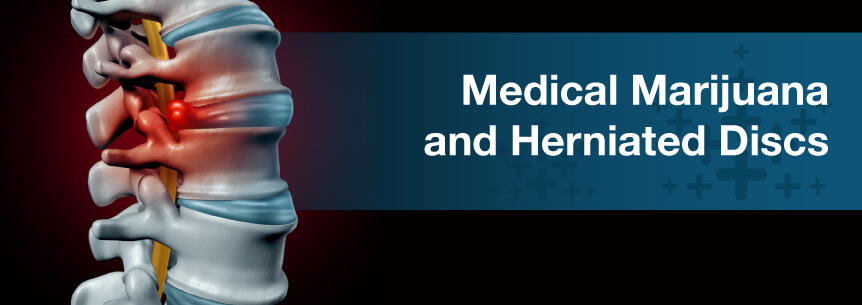
Back pain is quite prevalent, with as many as 90 percent of people experiencing it at some point in their lives. It’s a familiar reason for missed work. It’s also the second most common reason people visit their primary care doctor, according to the Cleveland Clinic.
One chief cause of back pain is a herniated disc. These can be repetitive and disabling, particularly for individuals who do a lot of heavy lifting. Aside from spinal surgery, pain injections and medications, including addictive opioids, current treatment is limited, and many don’t get the results they’re looking for. Fortunately, medical marijuana promises relief.
Cannabis can be an effective back pain treatment, according to studies published in journals like Current Neuropharmacology. The main components of cannabis, CBD and THC, have documentation regarding their anti-inflammatory and pain-relieving properties.
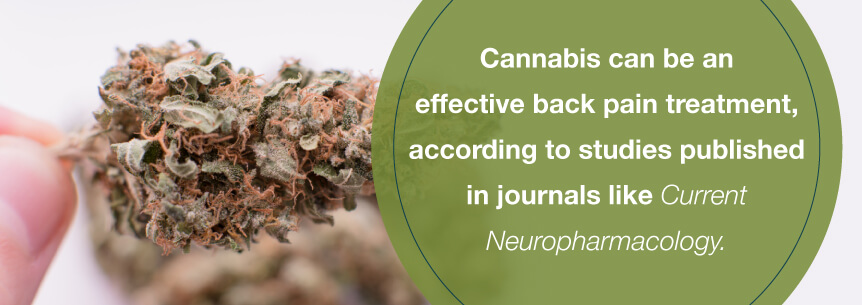
Medical weed also has anti-spasm, anti-anxiety and sedating effects beneficial for back pain treatment. Cannabinoids, in particular, are useful in treating nerve injury pain.
A PLoS One-published study shows CBD administration, which is non-psychoactive and well-known for its potential therapeutic benefits like pain reduction and inflammation, could be helpful in decreasing intervertebral disc degeneration damage.
Herniated discs seem to have an inflammation association. While anti-inflammatory medications weren’t able to suppress the inflammation, another study showed CBD in marijuana and herniated discs treatment just might help protect against deterioration.
Find A Doctor Find A Dispensary
A lot of patients report marijuana and herniated disc treatment treated their back pain as well as other related symptoms. In fact, they say it works better at providing symptom relief than pharmaceuticals with substantially fewer side effects. Medical pot might also effectively treat related symptoms of insomnia, muscle spasms, depression and anxiety.
Good cannabis strains for herniated discs are those that tackle not just the pain associated with herniated discs, but the other symptoms as well, such as the inflammation, insomnia, depression and more.
They also should help tackle some of the negative side effects of the treatments for herniated discs, like nausea, lack of appetite, mood changes, fatigue and more.
Here is a list of strains of cannabis for herniated discs you can try or talk to your medical marijuana or budtender about.
Use cannabis and herniated discs treatment internally or topically for symptom relief. Common methods of delivery include:
Learning about medical marijuana and herniated discs is your first step to getting relief. Visit our MarijuanaDoctors.com website to find a cannabis doctor, get your recommendation and begin your medical weed treatment right away. Professionals are standing by to help you finally find relief from herniated discs.
Chronic pain is a qualifying condition for medical marijuana in many states, so book your appointment today.
Find A Doctor Find A Dispensary
The vertebrae in your backbone form your spinal column. Between your vertebrae, you have round, flat cushioning pads called intervertebral discs, which work like shock absorbers. Every one of these discs has a gel-like, soft center known as the nucleus pulposus.
Whether you call it a ruptured disc, slipped disc or herniated disc, this painful condition occurs when pressure below or above the vertebrae forces part or all of the nucleus pulposus through a torn or weakened part of your annulus. You experience pain because the herniated nucleus pulposus is pressing on the nerves located near your disc.
While a herniated disc occurs more often in the lower area of your spine, it can also happen in your thoracic spine or cervical spine. Herniated discs are the most common reasons for neckaches and back, neck or leg pain.
Kids and young adults have high water content in their discs. When you get older, this disc water content decreases, making your discs less flexible. As your discs start shrinking, it creates narrower spaces between your vertebrae. Certain factors may weaken your disc, including:
To identify what’s causing your pain, doctors diagnose two basic types of spinal disc issues. These are:
If you have a symptomatic herniated disc, there isn’t any pain with the disc, but instead, the leaking material from the inside of your disc is irritating or pinching a nerve nearby. With this, you experience radicular pain, such as pain to a nerve root. This pain could spread to other areas of your body, like down your arm from your neck or down your leg from your lower back. Sciatica is the term used to describe leg pain caused by a pinched nerve.
If you have a symptomatic degenerated disc causing leg or lower back pain, your disc space, or lack of it, is the pain source — often referred to as axial pain.
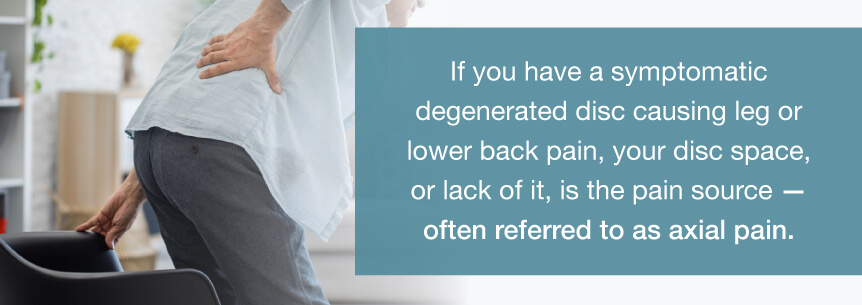
Other factors can also cause a herniated disc, such as:
Doctors use a combination of a physical exam, your medical history and testing to diagnose a herniated disc.
Herniated discs types depend on their location in your spine. Three common types include:
Lumbar disc herniation description dates back to ancient times. However, it wasn’t until the mid-1700s when we understood herniated discs as a clinical entity. Even though surgeons performed spinal enchondroma surgeries in the beginning of the 20th century that could have been for herniated discs, you can trace modern discectomy surgery back to the 1930s with a pair of American surgeons, Joseph Barr and William Mixter.
From this date to the current times, our understanding of the natural history, pathophysiology and treatment of herniated discs has become and continues to grow more sophisticated.
Herniated discs tend to occur more in your lumbar spine or lower back. However, they can also occur in your cervical spine or neck. Common herniated disc symptoms include:
It’s not unheard of to have a herniated disc without realizing it. Sometimes, the only way an individual knows they have one is if they show up on spinal images.
Your spinal cord separates into a group of long nerve roots, called the cauda equina, right below your waist that looks like the tail of a horse. Disc herniation hardly compresses the whole cauda equina. To avoid permanent paralysis or weakness, some individuals require emergency surgery.
Some complications warranting a trip to the doctor or emergency room include:
In a study published in the International Journal of Psychiatry in Clinical Practice, anxiety and mood disorders were more common in patients with cervical or lumbar disc herniation than in individuals with no herniation.
Also, patients who’ve had disc surgery have a higher risk of anxiety and depression than others. According to the study, clinicians should show more sensitivity towards psychological concerns in disc surgery patients. Mental health professional assistance and psychological assessment should be part of the hospital stay and the recovery and rehabilitation period, if possible.
Herniated disc statistics, according to the National Institutes of Health, include:
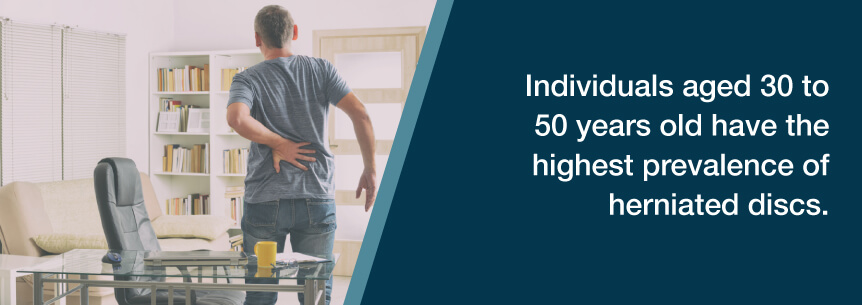
While performing your physical examination, your physician will check for tenderness in your back. They’ll have you lie flat while moving your legs in different positions. This exercise helps them figure out what’s causing your pain. They may conduct a neurological examination to check your:
In many herniated disc cases, all the doctor needs to make a diagnosis is your medical history and a physical exam. If they suspect you have another condition or if they need to see your affected nerves, they’ll order some imaging tests, including:
Doctors may start off with conservative treatment, where you avoid painful positions and follow a pain-medication and exercise regimen.
Your physician may recommend you take one or more types of medications to relieve your herniated disc symptoms. These include:
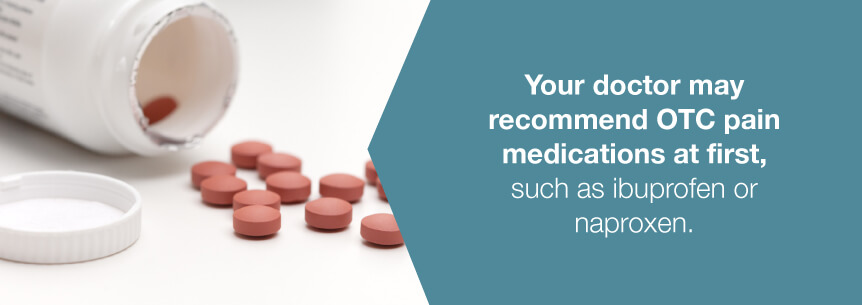
If your pain still hasn’t subsided after a few weeks, your doctor may recommend physical therapy, where you’ll learn exercises and positions to help reduce herniated disc pain.
Not many people require surgery for herniated discs, but some do. You may require surgery, such as a discectomy, lumbar decompression surgery or fusion, if your symptoms haven’t improved after six weeks with conservative treatments. Surgical options include minimally invasive and open surgeries.
Some complementary and alternative treatments have eased chronic back pain in some patients, including the following: